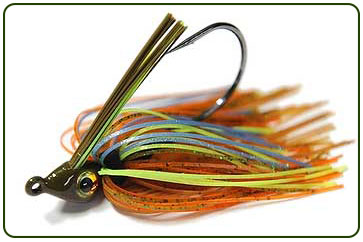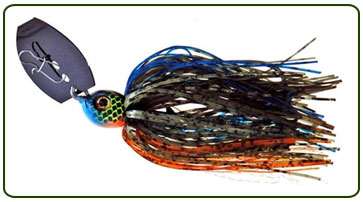

Swim jigs and bladed jigs are two highly effective lures for mimicking various types of baitfish and a great choice for targeting bass, pike and pickerel around scattered underwater cover.
-
Suggested Seasonal Use: Year-round, open water
-
Species: Primarily bass, pike and pickerel, though other warm water species may be caught
-
Types: Swim jigs – which usually resemble a typical skirted jig – feature a single, medium to heavy wire hook, a synthetic skirt, and a weighted jig head designed to run true through the water. They are also often tipped with a soft-plastic trailer such as a single or twin-tail grub, or boot-tail swimbait. Swim jigs are made in an array of sizes, weights and colors to fit various applications.
Similar to swim jigs, bladed jigs – or vibrating jigs – also typically feature a synthetic skirt, weighted jig head and a single wire hook. The primary difference between the two is that a bladed or vibrating jig features a metallic or painted blade at the front of the jig, connected to the jig head and often the line tie. When retrieved through the water, the blade on the jig tightly wobbles and vibrates quickly, emitting a pulsating action and a strong vibration in the water.
-
How to Use: In contrast to many types of jigs, swim jigs and bladed jigs are designed to imitate fleeing baitfish and be retrieved through the middle and upper sections of the water column, rather than being crawled, hopped or dragged on the bottom. Though these jigs can be slowly and effectively reeled along the bottom, they’re generally more productive with continuous movement through the water, and with erratic retrieves around aquatic habitat such as wood, weeds and rock.
